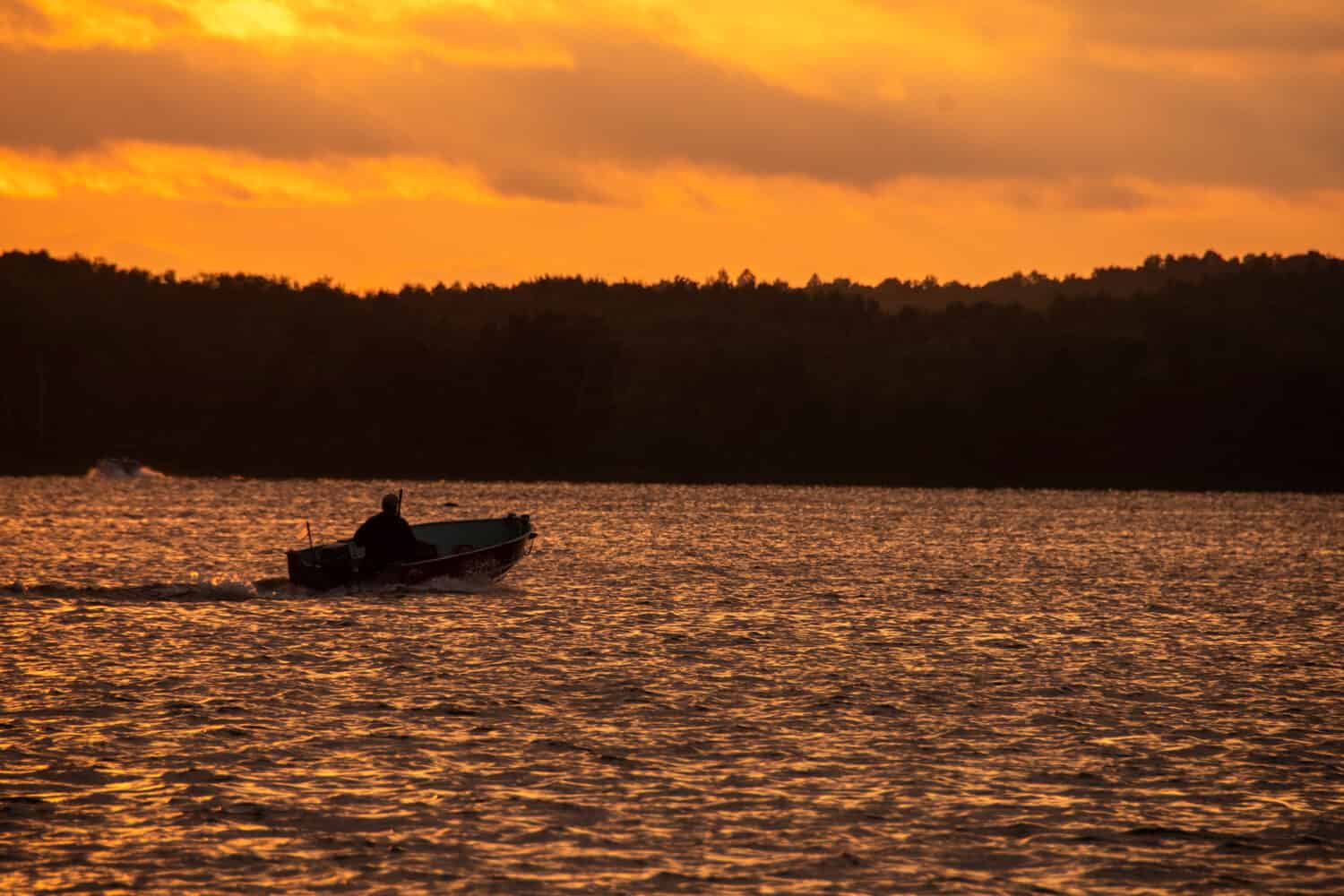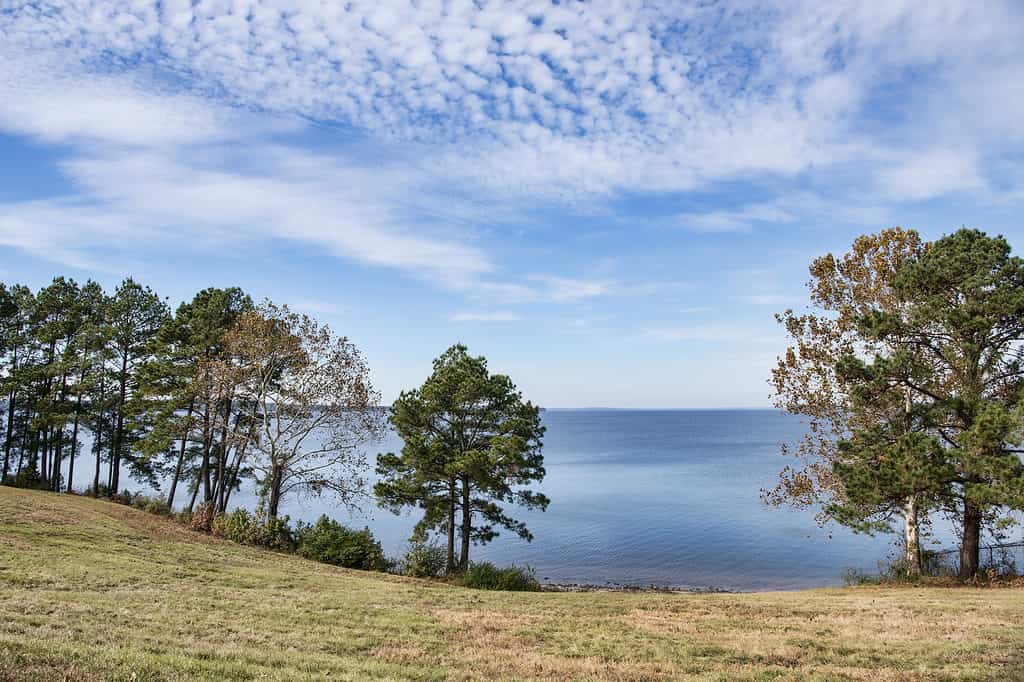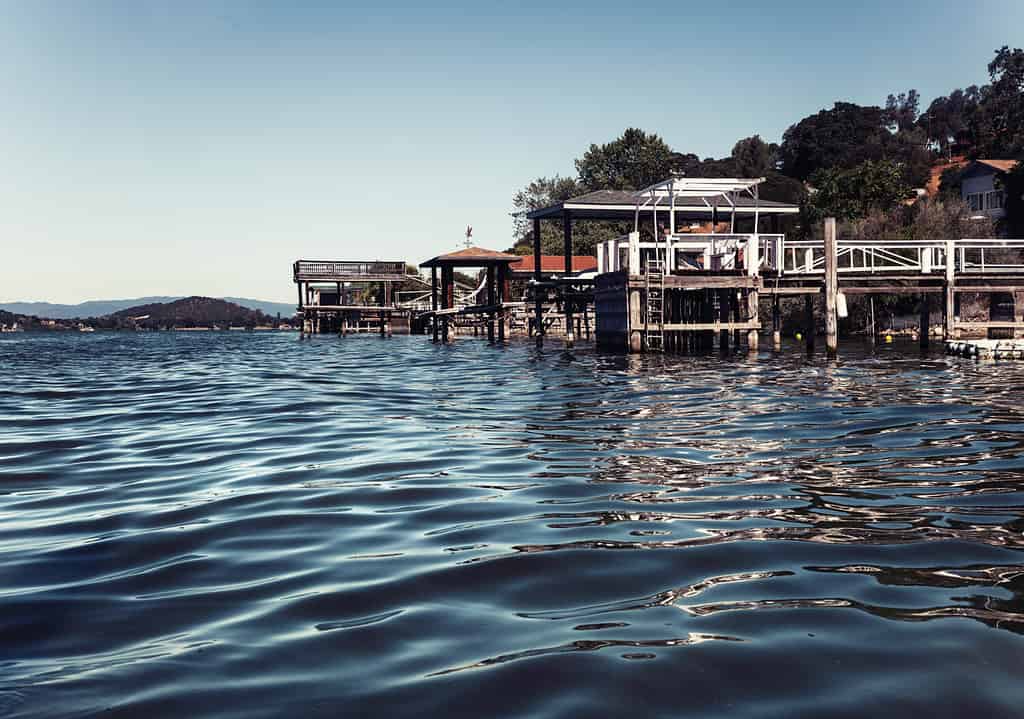If you’re unfamiliar with game fish, you likely wouldn’t have heard of the bluegill (Lepomis macrochirus). These medium-sized fish are highly sought after due to their easy-catching and delicious taste. With the species being all over the United States, it’s good to know bluegill size comparison and how big they get.
What’s unique about this species is that it comes in varying sizes. The average not being nearly as large as the biggest bluegill caught. This rare occurrence happens when a specific set of conditions are met.
Are you still interested in learning more about Bluegill comparison? If so, we’ll delve deeper into bluegill sizing, the largest on record, and the conditions necessary to grow big.
What Is the Average Bluegill Fish Size?

The standard size of a bluegill fish is six to eight inches long.
©Stacey Ann Alberts/Shutterstock.com
Before looking at the largest bluegill fish, we first need to compare the size. A bluegill, on average, is anywhere from six to eight inches in total length from the nostril to the back dorsal fin. Their total weight is mostly under two pounds and rarely exceeds that limit.
Compared to other fish, the bluegill is often the prey due to its small stature. However, that doesn’t mean that there aren’t massive bluegill that exists. Generally, male bluegill tends to be bigger than their female counterparts.
Despite that, there are still some massive bluegill fish being caught. To understand what makes these enormous fish – well, massive, we need to look at the fish’s environment, diet, and genetics. These three factors greatly impact a bluegill’s size.
How the Environment Plays a Role in Fish Size
Similarly to any species, fish must have certain conditions met to thrive physically. This includes having a safe environment free from predators, stress, and a harsh climate. Additionally, a fish will need abundant food, space, and a place to breed safely.
When these conditions are met, a fish’s size will increase. Bluegill are common in the United States, making them an excellent angling fish.
Not only would bluegill need a safe environment to grow, but it would also need to survive long enough to grow to a specific size. To better understand bluegill size comparison, let’s look at factors contributing to a fish’s size.
Diet and Fish Size
Any living organism needs a proper diet to grow. Bluegill, with abundant food sources and less competition for resources, tends to grow bigger. The bluegill thrives on insects, snails, crayfish, and zooplankton. They also eat other fish and their eggs, which is not a steady food source.
If bluegill gets enough nutrition in its diet, it can properly grow. However, that doesn’t always mean it will exceed 10 inches. Instead, it is just one factor contributing to a fish’s growth.
Genetics
Another factor that plays a significant role in how big a fish can grow is genetics. In nature, it’s survival of the fittest. If an area has bigger bluegill, the offspring will be slightly bigger. However, these fish must survive long enough to produce offspring, fertilize the eggs, and hatch safely.
How Big Can Bluegill Fish Get?

A bluegill can grow to be up to sixteen inches in length, but the average is six inches.
©iStock.com/woogies1
The average bluegill tends to be anywhere from six to eight inches in total length from nose to dorsal fin. Bluegill of this size weigh anywhere from one pound to three, depending on its overall length. The larger the bluegill, the heavier it will be.
Despite these averages, bluegills have been found all over the United States that are much larger than these. In fact, some of the bluegills found even span up to sixteen inches in length! That’s way more than the average bluegill and is a rare sight. Additionally, bluegill can weigh a massive amount. Some of them end up being three to four pounds.
The Largest Bluegill Ever Recorded/Caught
The largest bluegill was caught in the depths of Ketona Lake in Alabama. Angler T. Hudson caught this massive fish back in 1950 as he was fishing for fun. When he pulled it out to the water, it was nearly double the size of the standard bluegill.
The largest bluegill ever caught weighed 4 pounds and 12 ounces. It also was a record-breaking 15 inches in total length. Even the girth of the fish was a whopping 18.25 inches, which is very hefty. This fish was massive compared to any other prey in the lake.
As a bluegill size comparison, you could wrap three one-dollar bills around the fish. Another comparison is to imagine a bowling ball, as that’s how thick the largest bluegill is. And as for the total length, you can imagine three soda can bottles.
What Is the Trophy Size for Bluegill?

The trophy size for bluegill is 10 inches, but it will change yearly based on location.
©Stacey Ann Alberts/Shutterstock.com
While there is a vast difference in sizing compared to the average and largest bluegill fish, it’s important to remember that not all get that big. Instead, there is an official “trophy size” for the bluegill.
If you’re unfamiliar with the term, a trophy size refers to a chart of the largest fish caught yearly. The fish can be kept or released and often recorded by the local department for a bluegill size comparison. Depending on the area, the trophy size of the fish might be smaller or bigger.
A trophy size signifies a larger-than-average fish that is rare to see. The trophy size for bluegill fish span around 10 inches in length and weigh up to one to two pounds.
Best Places and Time of Year to Catch Bluegill
If you’re interested in catching some bluegill or want to perform a bluegill size comparison, you’ll be glad to know that there are plenty of places to catch them. Bluegills are spread throughout the United States in rivers and lakes, making them one of the more common fish.
They often are the most active during the spring and early summer months. Bluegill will be the most active during peak hours, generally dusk and dawn. They become aggressive and hunt down food sources. Plenty rises to the water’s surface when this happens, allowing them to hunt for food.
The Five Best Places to Find Bluegill
Since bluegill is one of the most abundant freshwater fish, there are a handful of places to find them. However, particular areas have large populations of bluegill. Below are the best places to find bluegill fish for viewing or angling.
1. Lake Winnipesaukee

Currently, Lake Winnipesaukee is the largest lake in New Hampshire.
©iStock.com/Gerry Fagan
Lake Winnipesaukee is located in Belknap, NH, and is the largest lake in the state. It has many fish species, including bass, bluegill, and trout. With the lake being 20 miles long and 12 miles wide, there are plenty of places to find bluegill.
2. Lake Okeechobee

Bluegill can be found at Lake Okeechobee, which is located next to the Kissimmee River.
©Berezovskaya/Shutterstock.com
Lake Okeechobee rests in Palm Beach County, FL. The lake spans over 730 square miles and connects to the Kissimmee River. It’s a popular fishing place with abundant crappie, bluegill, and largemouth bass.
3. Nelson Lake

Anglers come to Nelson Lake to catch many fish, including bluegill.
©Chaithanya Krishnan/Shutterstock.com
Nelson Lake is located in Sawyer County, WI. The lake spans over 2,716 acres and has a maximum depth of 33 feet. Anglers come here looking for panfish, largemouth bass, smallmouth bass, and walleye. However, there is also bluegill.
4. Toledo Bend

Located in Sabine, LA, Toledo Lake is a man-made reservoir.
©Bonnie Taylor Barry/Shutterstock.com
The Toledo Bend is located in Sabine, LA, and is the biggest man-made water body near the state. It spans over 185,000 acres and is an attraction for many skilled anglers. Fish such as crappie, bluegill, and catfish can be found here.
5. Clear Lake

Fishing at Clear Lake is fun because you can fish from the docks.
©Nature Art/Shutterstock.com
Clear Lake is located in Lake County, CA, and is the largest natural inland lake in the state. It’s located right above Napa County and is known for being one of the oldest lakes in North America. Anglers love to come here to catch fish, including carp, catfish, largemouth bass, and bluegill.
The photo featured at the top of this post is © iStock.com/mpwoodib
Thank you for reading! Have some feedback for us? Contact the AZ Animals editorial team.







